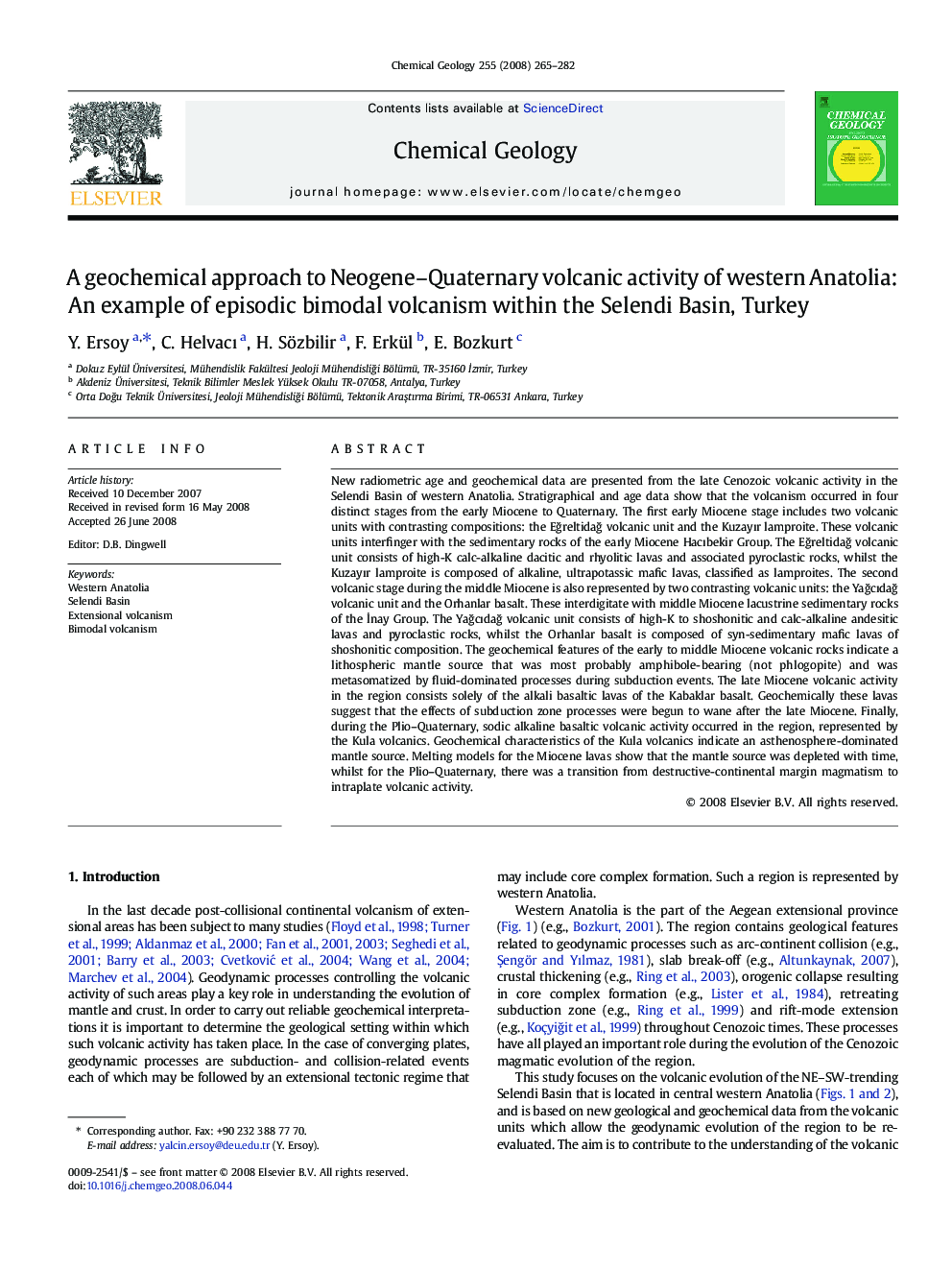| کد مقاله | کد نشریه | سال انتشار | مقاله انگلیسی | نسخه تمام متن |
|---|---|---|---|---|
| 4700684 | 1637722 | 2008 | 18 صفحه PDF | دانلود رایگان |

New radiometric age and geochemical data are presented from the late Cenozoic volcanic activity in the Selendi Basin of western Anatolia. Stratigraphical and age data show that the volcanism occurred in four distinct stages from the early Miocene to Quaternary. The first early Miocene stage includes two volcanic units with contrasting compositions: the Eğreltidağ volcanic unit and the Kuzayır lamproite. These volcanic units interfinger with the sedimentary rocks of the early Miocene Hacıbekir Group. The Eğreltidağ volcanic unit consists of high-K calc-alkaline dacitic and rhyolitic lavas and associated pyroclastic rocks, whilst the Kuzayır lamproite is composed of alkaline, ultrapotassic mafic lavas, classified as lamproites. The second volcanic stage during the middle Miocene is also represented by two contrasting volcanic units: the Yağcıdağ volcanic unit and the Orhanlar basalt. These interdigitate with middle Miocene lacustrine sedimentary rocks of the İnay Group. The Yağcıdağ volcanic unit consists of high-K to shoshonitic and calc-alkaline andesitic lavas and pyroclastic rocks, whilst the Orhanlar basalt is composed of syn-sedimentary mafic lavas of shoshonitic composition. The geochemical features of the early to middle Miocene volcanic rocks indicate a lithospheric mantle source that was most probably amphibole-bearing (not phlogopite) and was metasomatized by fluid-dominated processes during subduction events. The late Miocene volcanic activity in the region consists solely of the alkali basaltic lavas of the Kabaklar basalt. Geochemically these lavas suggest that the effects of subduction zone processes were begun to wane after the late Miocene. Finally, during the Plio–Quaternary, sodic alkaline basaltic volcanic activity occurred in the region, represented by the Kula volcanics. Geochemical characteristics of the Kula volcanics indicate an asthenosphere-dominated mantle source. Melting models for the Miocene lavas show that the mantle source was depleted with time, whilst for the Plio–Quaternary, there was a transition from destructive-continental margin magmatism to intraplate volcanic activity.
Journal: Chemical Geology - Volume 255, Issues 1–2, 30 September 2008, Pages 265–282